gbtest
The Route of the Walk
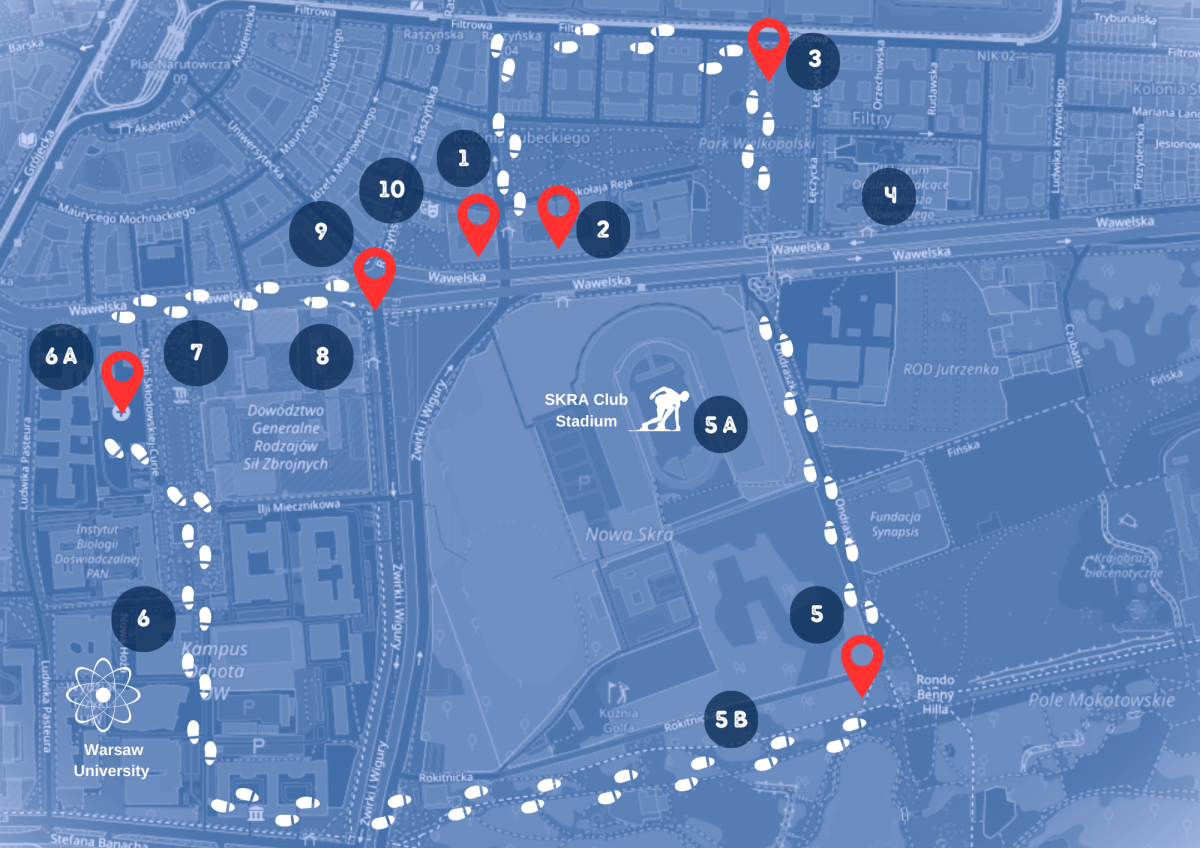
Marshal Józef Piłsudski Representative District
The National School of Public Administration (KSAP) is located near Józef Piłsudski Park* - Pole Mokotowskie, a district of Warsaw that was intended to become a symbol of a modern state after Poland regained independence in 1918. The urban concepts of the 1920s and 1930s envisioned the creation of a representative district here, with monumental government, military, and academic buildings.
The new district was meant to be a modern, open space instead of a densely built-up center. The planners aimed to combine various functions: residential, urban, and symbolic. The main street was to be Sejm (Parliament) Avenue, along which the most important buildings showcasing Poland's greatness were to be erected. At the end of the Avenue, the Temple of Divine Providence was to stand, preceded by a large Glory Square. The district plan was presented in 1938 at the exhibition "Warsaw Yesterday, Today, and Tomorrow." Unfortunately, the war prevented the realization of these plans.
Public utility building projects were developed by the most outstanding Polish architects of the time, in the style of modernism or art déco. World War II thwarted the realization of plans on the scale that was intended, but some pre-war buildings, meant to testify to the strength of the state reborn after 123 years of partitions, still exist today. These buildings can be viewed during a walk, to which we warmly invite you.
*Józef Piłsudski (1867-1935) – one of the most important figures in Polish history. A politician, military leader, and statesman, he was one of the main architects of Poland's independence in 1918. He played a key role in shaping the interwar Poland. From 1918 to 1922, he served as the Chief of State, and from 1926, he was the Marshal of Poland. His rule was characterized by a decisive management style, but also by efforts to modernize the country and strengthen its position on the international stage. The legacy of J. Piłsudski remains alive in Polish national memory and is a part of Polish national identity.
Walking route:
1. KSAP Building and Science District
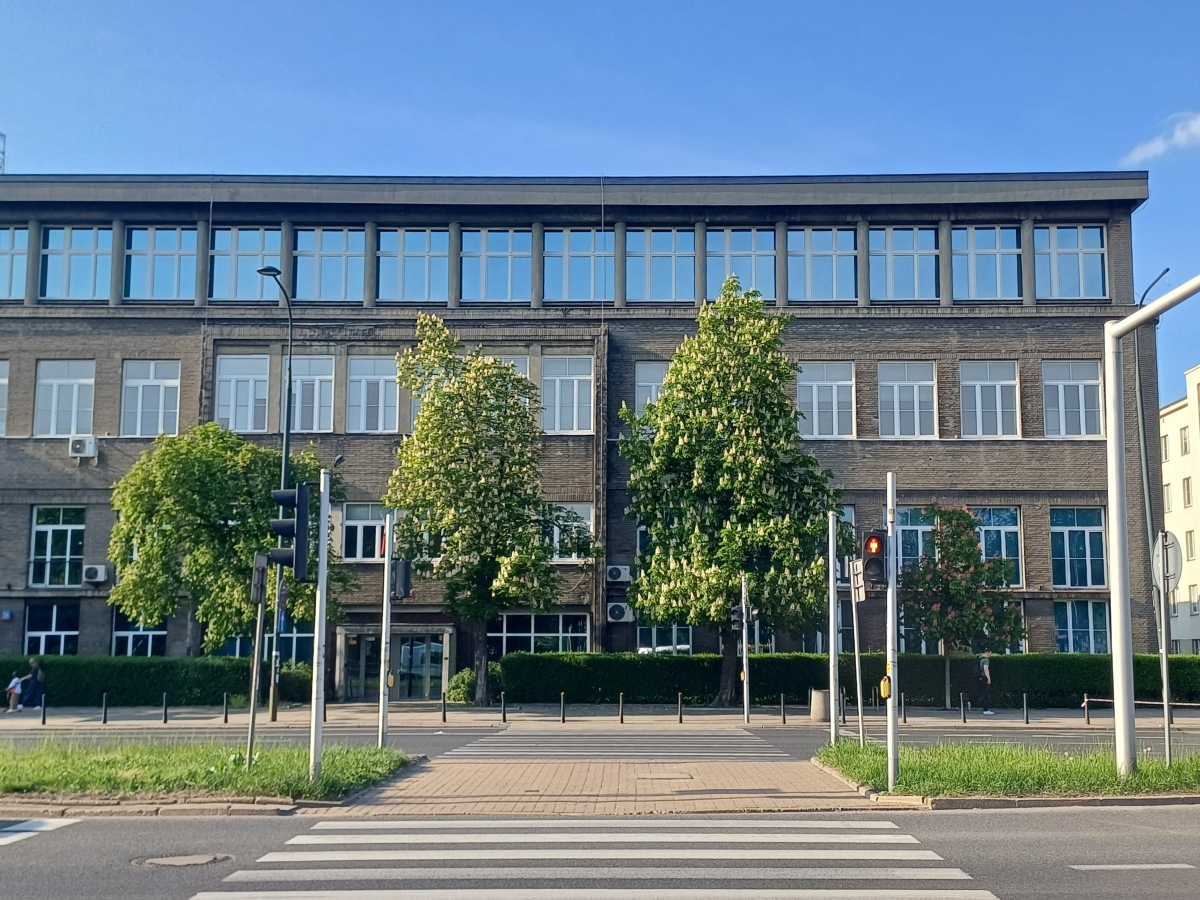
Source: KSAP resources
After World War I, plans were made to create the Science District (part of the representative district) on the outskirts of Józef Piłsudski Park - Pole Mokotowskie, centered around the already existing campus of the Warsaw University of Technology. The project aimed to establish or relocate higher education institutions and scientific institutes to the Warsaw Ochota area. Alongside the University of Technology, the following institutions were included: the Geological Institute of the University of Warsaw, the Warsaw School of Economics, the Warsaw University of Life Sciences, the Radium Institute along with the Chemistry Department of the University of Warsaw, the Medical Academy, and the Academy of Political Sciences (currently KSAP). Architectural projects for new buildings and campuses were developed, some of which were realized only after World War II.
The KSAP headquarters is housed in a modernist building designed by one of the most prominent Polish architects of the interwar period, Professor Romuald Gutt, as the headquarters of the Social Institute, whose task was to run the elite School of Political Sciences. The project was awarded first prize in an architectural competition in 1926 and was implemented in stages from 1926 to 1932. Initially a three-story building, it was extended in 1949-1950, gaining a fourth story. Inside, one can notice the characteristic minimalism of modernism. Some architectural elements from the 1930s have also been preserved.
2. Ministry of Climate Building
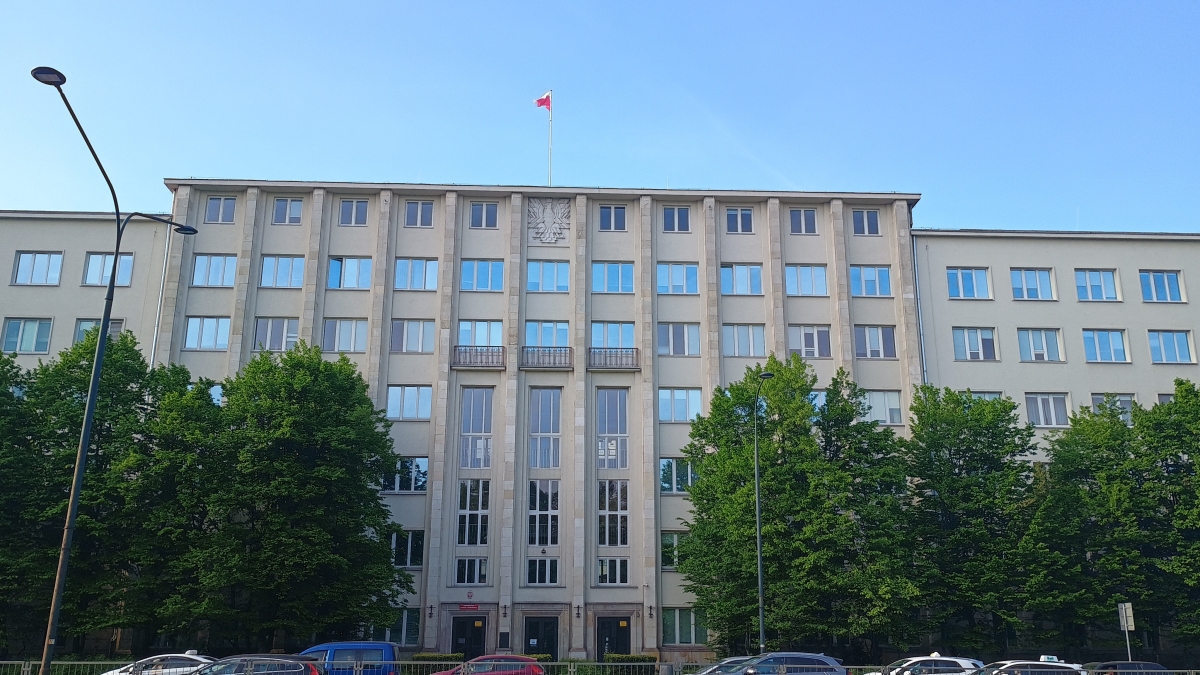
Source: KSAP resources
The building of the Ministry of Climate and Environment, completed in 1938 as the headquarters of the State Forests Directorate, is the largest structure of the unrealized representative district. Noteworthy is the art déco bas-relief on the building's facade, depicting Polish national emblem - the White Eagle.
3. Warsaw Filters: A Treasure of Technology and History
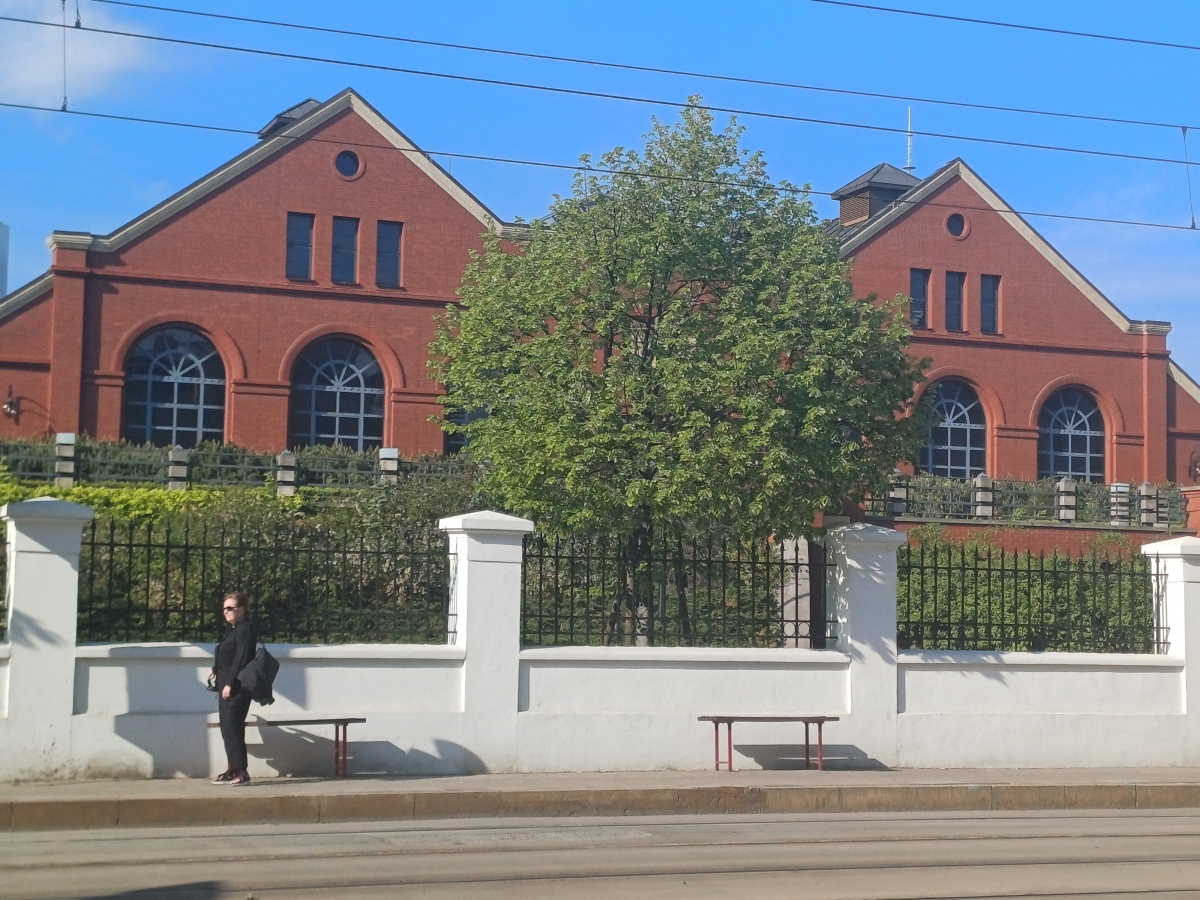
Source: KSAP resources
Warsaw Filters is one of the most important technical monuments in Warsaw. They were designed by the eminent British engineer William Lindley and his son. The construction was completed in 1886. W. Lindley had previously designed sewage systems in other major European cities, including Hamburg, Budapest, and St. Petersburg. Upon completion, Warsaw became one of the six cities in Europe with a modern water supply system in the 19th century.
The complex occupies a vast area of 30 hectares. All structures were built using specially fired red bricks made without calcium, making them resistant to moisture. Some of the structures designed by Lindley, such as the 36 slow filters resembling castle chambers or catacombs and clean water reservoirs, are still in use today after numerous modernizations. In the 21st century, the complex was enriched with a modern intermediate ozonation station and carbon filters, significantly improving the quality of treated water, which is now drinkable directly from the tap in Warsaw. The distribution network, currently covering the entire city of Warsaw and some surrounding towns, consists of 3,600 km of water pipes.
In the distance, another monumental building of the representative-government district, built in 1938 for the Warsaw Voivodeship Office, is visible. It currently houses the Supreme Audit Office.
4. J. Słowacki High School
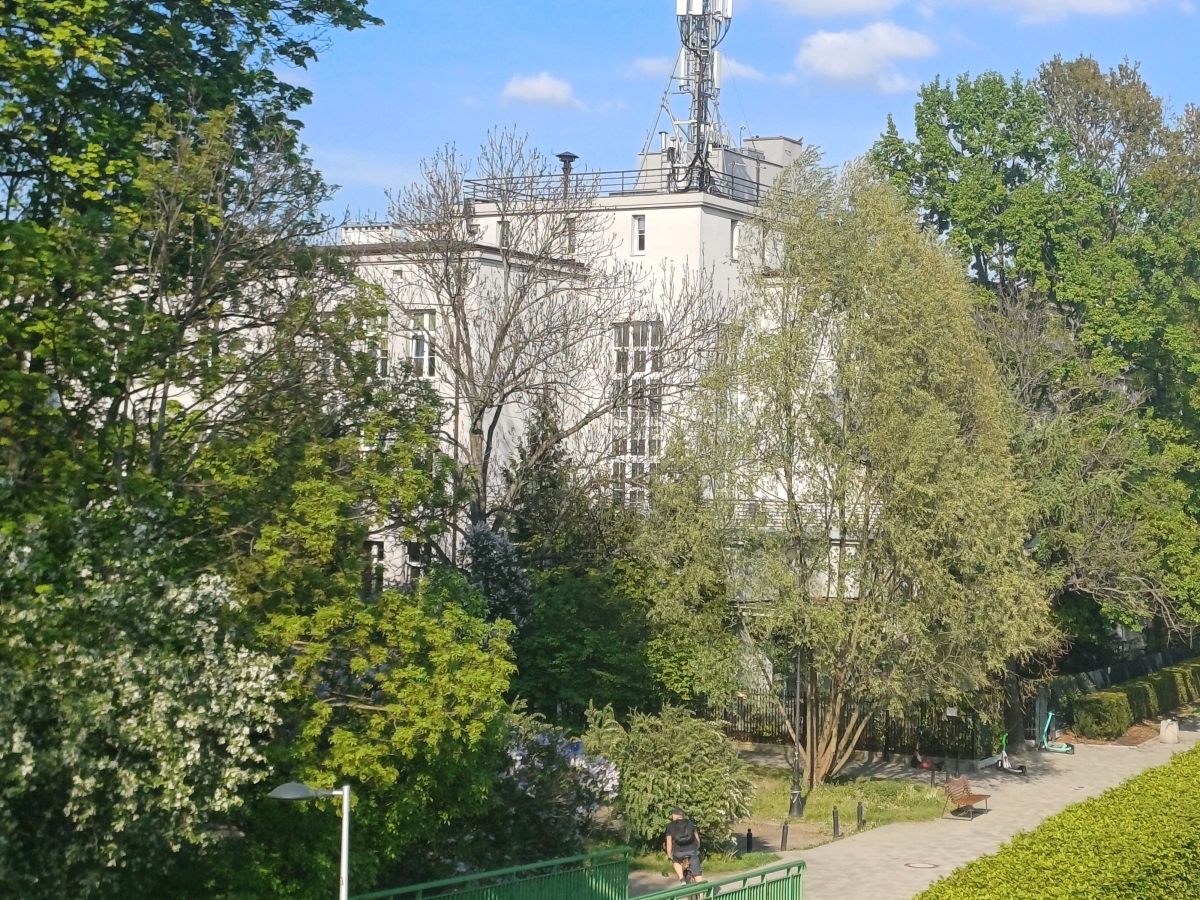
Source: KSAP resources
Passing through Wielkopolski Park (established in 1938), next to one of the best high schools in Warsaw: Słowacki High School*. The building, constructed between 1931-33, is an excellent example of functionalist architecture from the early 1930s.
*Juliusz Słowacki (1809 – 1849) was one of the most outstanding Polish Romantic poets. His work had a significant impact on the development of Polish literature and the shaping of Polish national identity. In his works, he often addressed patriotic, mystical, and philosophical themes. After the outbreak of the November Uprising in 1830, Słowacki emigrated to France, where he spent most of his life and where he died. His poetry and dramas are still considered the canon of Polish literature, and he is recognized as one of the greatest poets in Polish history.
5. Józef Piłsudski Park - Pole Mokotowskie
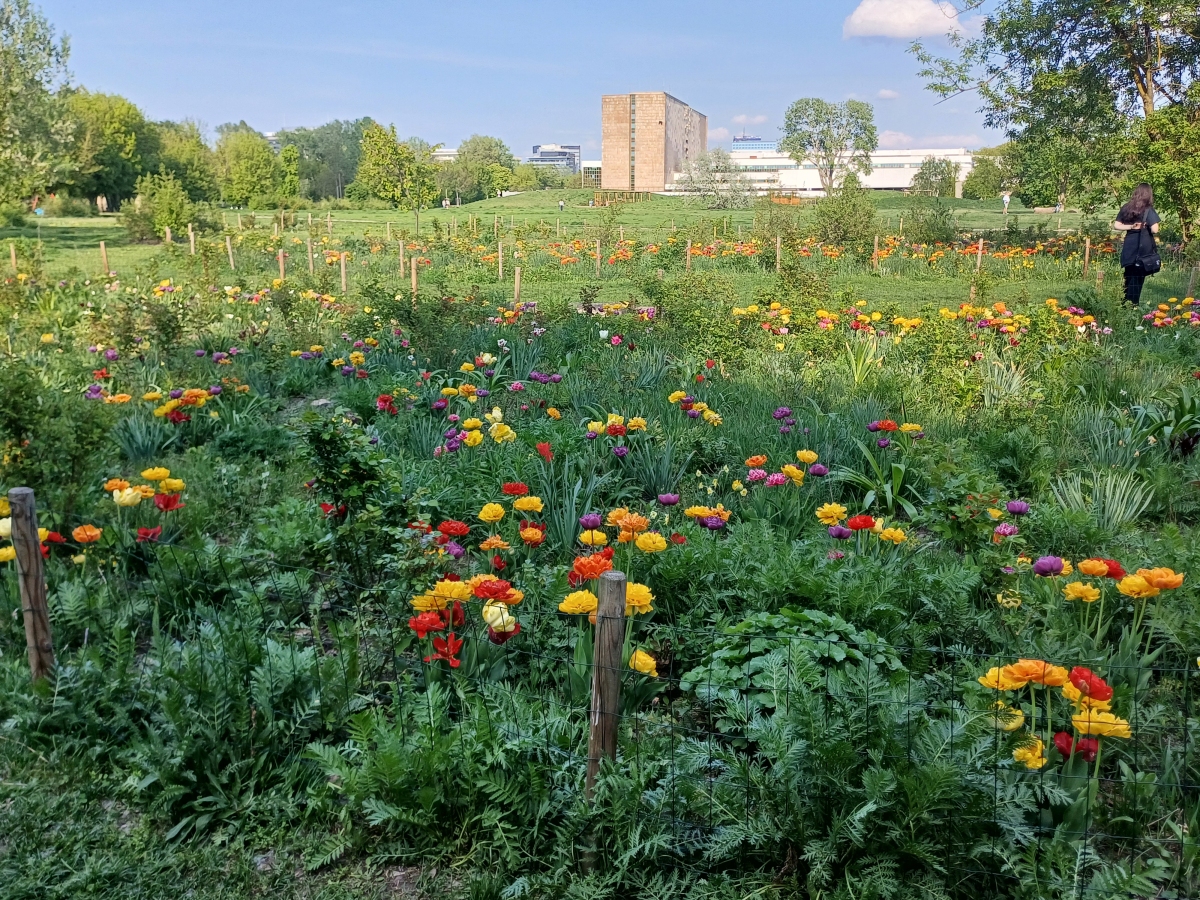
Source: KSAP resources
This is the largest of Warsaw's numerous parks, covering 70 hectares. In the 19th century, Pole Mokotowskie served as a training ground for the Russian Tsarist cavalry stationed in Warsaw. In 1841, the first horse racing track in the Kingdom of Poland was established here, and in 1910, Warsaw's first airport, aviation workshops, and a pilot school were opened. It was a place from which planes took off for demonstration and sports flights, and eventually for passenger flights. During the interwar period, military parades were also held at Pole Mokotowskie, symbolizing the rebirth of the Polish army after the period of partitions.
On May 17, 1935, funeral ceremonies for Marshal Józef Piłsudski were organized at Pole Mokotowskie. For this occasion, a mound was built, which was later intended to become a memorial to the Marshal, integrated into the planned Representative District, which was named after Józef Piłsudski in 1936. The mound was removed in connection with the construction of the new National Library headquarters in the 1970s and 1980s. A stone commemorating Józef Piłsudski's funeral is located in another part of the park (near the water reservoir).
Pole Mokotowskie Park is not only one of the favorite meeting, recreation, and leisure spots for Warsaw residents but also an important part of the capital's history.
5a. Skra Stadium
Since 1930, the park has been home to one of Warsaw's oldest sports clubs, "Warszawianka." In the 1930s, open fields, a club pavilion, and a football stadium were built. The development of sports facilities continued after the war when the Skra sports club took over the area. Currently, the entire complex is owned by the city of Warsaw and is being redeveloped to serve the residents of the capital in the future.
5b. Ryszard Kapuściński Path
Ryszard Kapuściński, a Polish reporter, writer, and photographer, known as the "emperor of reportage", lived for many years near the park, where he walked daily. The path commemorates his most famous books, travels, and photographs. He is the author of numerous publications inspired by his travels in the 1960s and 1970s to Africa, South America, and Asia. Kapuściński documented, among other things, the fall of the empire in Ethiopia (in the book "The Emperor" written in 1978, which was adapted into a play performed in many places around the world) and Iran ("Shah of Shahs" from 1982). Kapuściński's books have been translated into over 30 languages.
6. Ochota Campus
The plans to create the Science District in this area were only partially realized before World War II. After the war, the Science District was replaced by the Socialist Realist Knowledge District, which included existing buildings (the Radium Institute along with the Chemistry Department of the University of Warsaw) and other faculties of the University of Warsaw (Geology, Physics, Biology, Mathematics/Computer Science/Mechanics), research institutes of the Polish Academy of Sciences, and the Medical University. In total, there are several research units mainly focused on mathematical, natural, and medical sciences.
6a. Maria Skłodowska-Curie National Institute of Oncology
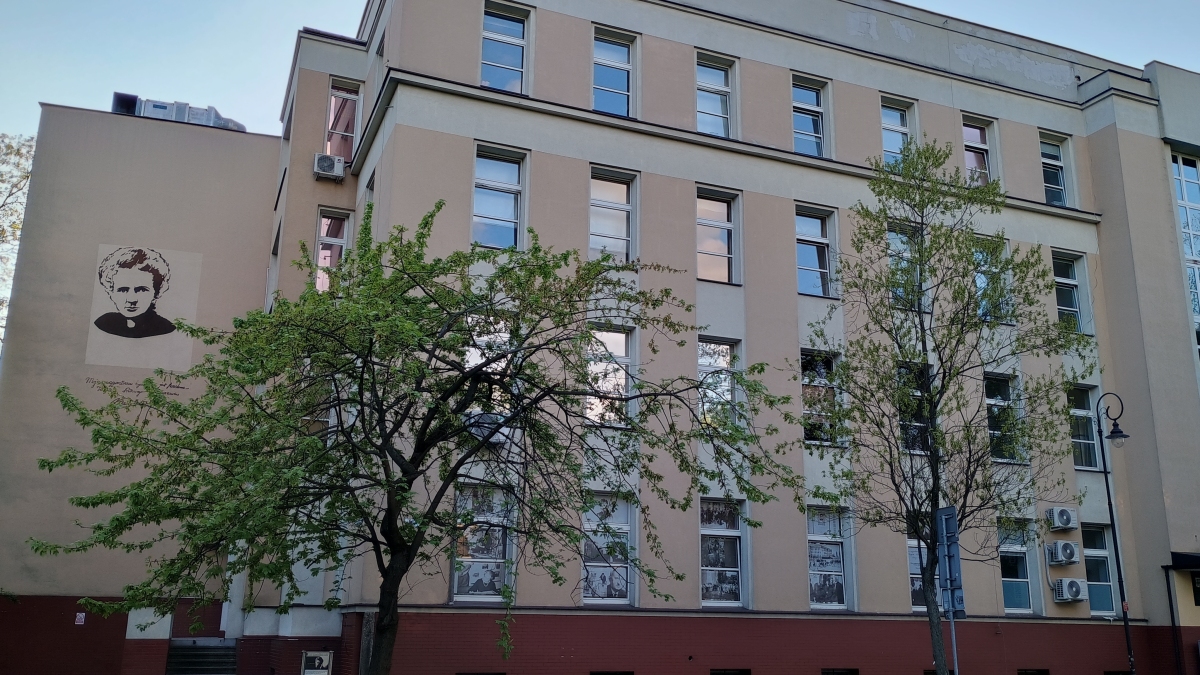
Source: KSAP resources
The institute was founded on May 29, 1932, at the initiative and request of Maria Skłodowska-Curie* as the Radium Institute - the first modern cancer treatment center in Poland. Today, you can admire a mural with Maria's image and the quote, "My most fervent wish is the establishment of the Radium Institute in Warsaw." Maria donated a gram of radium, which was her property, to the new facility. It was the foundation for the institute's activities.
*Maria Skłodowska was born on November 7, 1867, in Warsaw at 16 Freta Street, in a house that now houses her museum. She left her homeland in 1891 to begin studies at the Faculty of Mathematics and Natural Sciences at the Sorbonne in Paris (universities in Poland did not accept women at that time). An exceptionally talented researcher, she focused her doctoral work on radioactivity. Collaborating with her husband, Pierre Curie, she discovered a new chemical element in 1898, which she named Polonium in honor of Poland, which was then under partition. Six months later, the couple announced the discovery of Radium. For their achievements, the Curies, along with Henri Becquerel, received the Nobel Prize in Physics in 1903. Later, in 1911, after her husband's tragic death, Maria was honored with the Nobel Prize again, this time in Chemistry.
Doctors were very interested in the newly discovered elements. After numerous experiments, they noticed that radioactive radium could destroy cancer cells. The distinguished researcher persuaded the authorities to create the Radium Institute in Paris. Research on radioactivity and its medical applications was conducted there. The scientist wanted Poland to have a similar facility in the future.
In 1925, Maria Skłodowska, along with the President of the Republic of Poland, Stanisław Wojciechowski, laid the cornerstone for the construction of the Radium Institute in Warsaw, and in 1932, she participated in the opening ceremony of the center on Wawelska Street. Maria visited her homeland for the last time then. She died in France on July 4, 1934. Rebuilt after World War II, the institute remains a crucial cancer treatment facility.
Interesting Facts:
Maria Skłodowska-Curie holds several records:
She was the first woman to pass exams in physics and chemistry at the Sorbonne.
She was the first woman to earn a doctorate in physics.
She was the first female lecturer.
She is the only woman to have received the Nobel Prize twice.
She is the only scientist honored with the Nobel Prize in two different fields.
She was one of the first women to obtain a driver's license (needed for transporting X-ray equipment during the war).
She is the first person buried in the Pantheon who was not born in France.
7. Maria Skłodowska-Curie Park
A maple tree in the park surrounding the Institute was planted by Maria Skłodowska-Curie. The park features a bust of Maria, created by sculptor Ludwika Nitschowa in 1935. This is a replica of the original bust, which was destroyed during the war. The park was renovated in 2023 and reopened on December 11, the 120th anniversary of the Nobel Prize in Physics, awarded on December 10, 1903.
In the distance, you can see the bell tower of the modernist church at Narutowicz Square and the monumental building of the House of Technicians named after Gabriel Narutowicz (the first president of Poland after regaining independence in 1918) - the central building of the oldest student housing complex in Poland, built in the 1920s (Science District). Rebuilt after the destruction during World War II, it was nicknamed "Alcatraz" by students (after the American prison of the same name) due to the building's monumentalism - its height, austere form, and heavy entrance doors.
8. General Command of the Armed Forces
The military complex, which currently houses the General Command of the Armed Forces, was built from the late 1920s, initially intended as the headquarters of the air force command. The most interesting building in the complex is the modernist command building designed in the shape of a cross. At the time, it was a bold and very modern construction, with meticulous finishing. The authors of the project were Rudolf Świerczyński and Stefan Bryła. The complex later served as the headquarters of the Navy Command, hence the propeller and anchor symbols placed in front of the building.
During World War II, the building was occupied by German armed forces. During the Warsaw Uprising in 1944, it was located in the area of operations related to the insurgent defense of the Reduta Wawelska tenement house. Numerous bullet marks from those events remain on the building's facade.
9. Aviator Monument
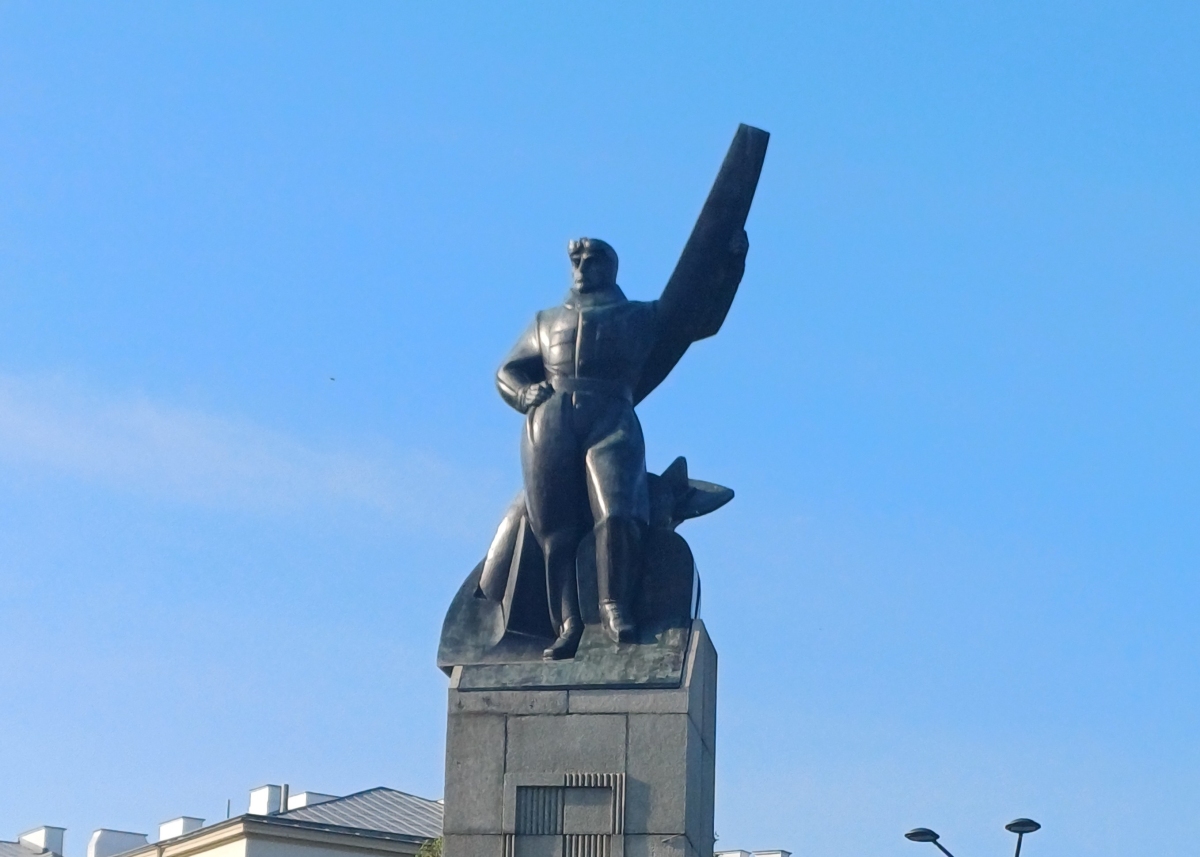
Source: KSAP resources
The Aviator Monument is a memorial dedicated to Polish aviators, designed in 1923 by Edward Wittig. The monument was unveiled in 1932 and was one of the first monuments in Europe dedicated to aviation. Originally, the monument stood at Unii Lubelskiej Square, on the edge of Pola Mokotowskie, where Warsaw's airport was located at the time.
The monument was destroyed in 1944 during World War II. A replica, unveiled in 1967, was placed at the entrance of the street leading to the current Warsaw-Okęcie Airport. The street is named after Żwirkioand Wigura, two pioneers of aviation in Poland in the 1920s.
10. Ochota Theater
The building housing Ochota Theater dates back to 1936 and has always served cultural institutions. Before the war, it housed the Institute of Folk Theaters, the most important pre-war organization dedicated to promoting folk theater movements. During World War II, the building was not destroyed, and thus, after the liberation of Warsaw, it could accommodate the first post-war cultural institutions, such as the State Higher School of Theater and later the State High School of Theater Techniques.
Ochota Theater (named after the district!) was established in 1970 by the initiative of two prominent Polish actors: Halina and Jan Machulski. The founders were pioneers in theater pedagogy and involving the audience in co-creating the artistic institution. Their work focused heavily on youth education and integrating professional and amateur spheres. Currently, the core activity of Ochota Theater is creating performances and other theatrical and performative forms by young artists at the beginning of their creative journey, supported by experienced stage artists (mentoring). The theater also hosts the Theater Circle, focused on educating children, youth, and adults through original workshops related to performances, tool workshops for teachers, collaboration with schools, and high school theater festivals.




















